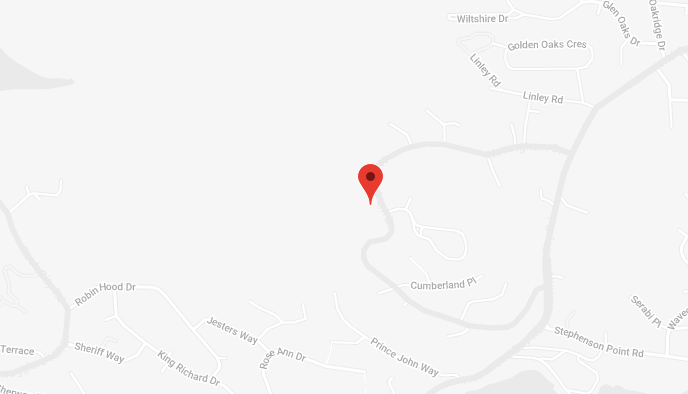Floored No More: Expert Guide to Mould Remediation for Wood Floors
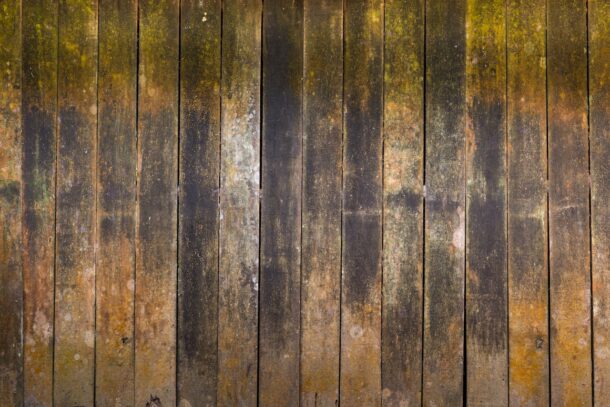
Mould is a persistent problem that can affect any home or area in a room, and hardwood floors are no exception. When moisture infiltrates wood surfaces, mould can develop, compromising the aesthetics and structural integrity of the flooring, as well as creating health hazards for the home’s occupants. It is crucial to address mould issues quickly and effectively.
This guide will walk you through the steps of how to remove mould from wood floors, focusing on identifying the mould type, implementing effective cleaning and drying techniques, and providing long-term protection for your wood surfaces.
How to Identify Mould on Hardwood Floors
Before tackling mould remediation, you must understand what type of mould you’re dealing with. Mould can appear in various colours, from black and green to white and yellow, and each type requires different levels of treatment. Because of the health issues mould can cause, proper PPE (personal protective equipment), including goggles, a face mask, and gloves are necessary around any suspected mould.
- Surface mould: Often appearing as white or light-coloured patches, surface mould is the easiest to treat as it hasn’t penetrated deep into the wood.
- Stachybotrys (black mould): Known as toxic mould, Stachybotrys can pose significant health risks. It usually presents as dark green or black spots and requires professional remediation due to its potential to release dangerous mycotoxins.
- Aspergillus and Penicillium: These moulds can range in colour from yellow to green and tend to thrive in humid environments. They can grow deep within the wood, causing more extensive damage.
Identifying the specific type of mould is crucial for determining the best course of action. If you are unsure about the type of mould affecting your floors, it is wise to consult a professional mould remediation service.
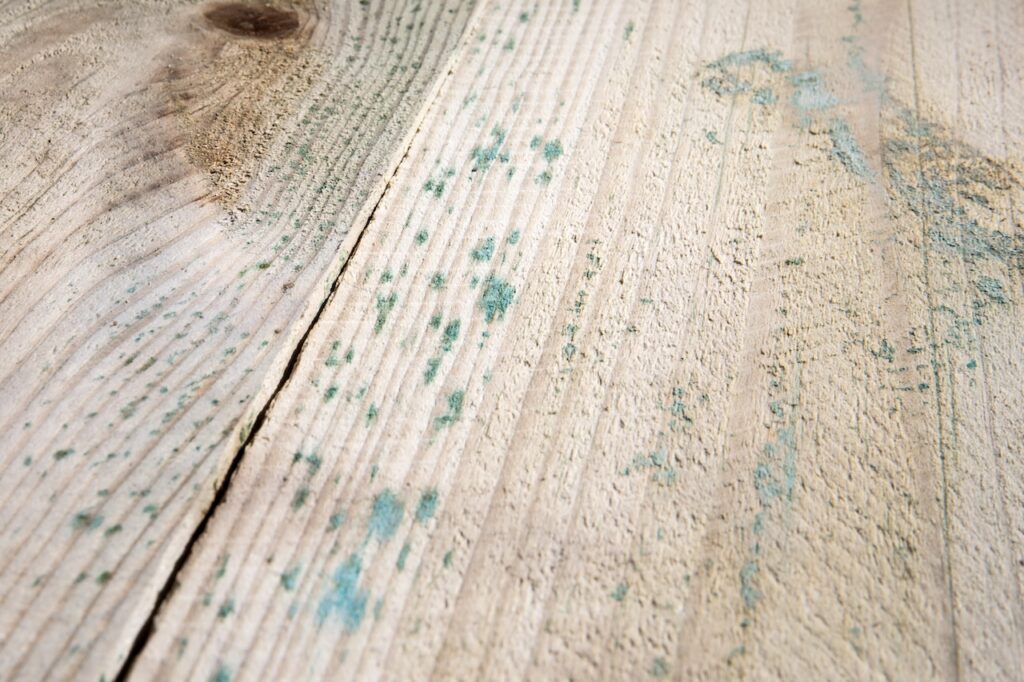
Different types of mould should be handled in different ways, so it’s important to identify what type of mould is impacting the wood floors before remediation.
How to Remove Mould from Wood Floors: Effective Cleaning Techniques
Once you’ve identified the mould type, the next step is to clean the affected areas thoroughly. However, it’s important to act carefully to avoid spreading mould spores or causing further damage to the hardwood floors. It’s always best to hire a professional service to handle the remediation process to ensure a thorough and safe job.
- Safety First: Mould can release spores into the air, which can cause allergic reactions and respiratory issues. Before you begin, wear protective gear, including gloves, goggles, and a mask, to prevent exposure to harmful spores.
- Dry the Area: Mould thrives in moist environments, so eliminating moisture is crucial. Use fans, dehumidifiers, and open windows to dry out the area as much as possible. The faster you can dry the wood, the easier it will be to remove the mould.
- Surface Cleaning: For surface-level mould, begin by scrubbing the affected areas with a mixture of water and dish detergent. A soft brush or sponge can be used to gently remove the mould without damaging the wood grain. Avoid using excessive water during this process, as hardwood floors are sensitive to moisture.
- Deeper Cleaning: If mould has penetrated the surface, you may need to use more potent cleaning agents like a diluted vinegar solution or hydrogen peroxide. These natural agents can effectively kill mould without the use of harsh chemicals. For stubborn mould, apply the solution, let it sit for a few minutes, and then scrub gently. Wipe down the area with a clean, damp cloth afterward.
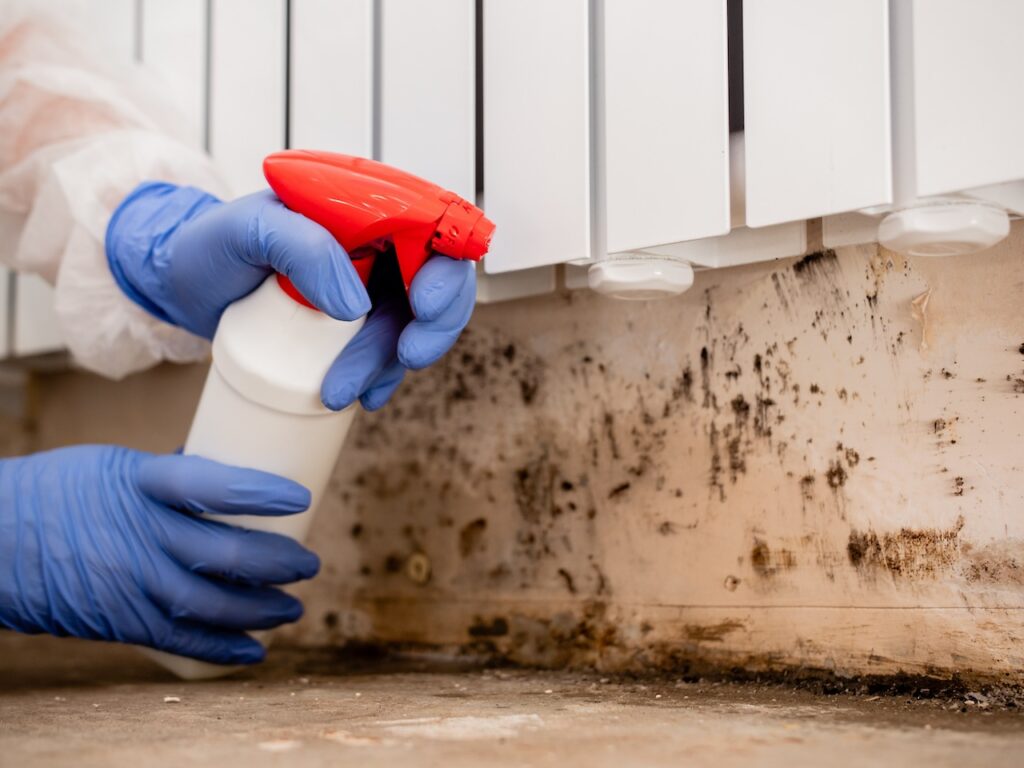
Knowing how to remove mould from wood floors safely and effectively is crucial to maintaining a healthy house.
Drying and Dehumidifying: Preventing Mould Regrowth
After cleaning, it’s vital to thoroughly dry the hardwood floors to prevent future mould growth. Mould spores are always present in the air, but they only grow when moisture is present. Drying the floor and controlling humidity levels are key steps in the remediation process.
- Fans and dehumidifiers: Set up fans and dehumidifiers to remove excess moisture from the air and the wood. The goal is to reduce the indoor humidity level to below 60%, ideally around 30-50%.
- Check for leaks: Mould on hardwood floors is often caused by underlying moisture issues like leaks from pipes, roofs, or windows. Inspect your home for potential sources of water infiltration and repair them immediately.
When to Replace Damaged Flooring
In some cases, mould can cause significant structural damage to the hardwood floors, making them unsalvageable. Signs that it’s time to replace sections of flooring include:
- Warping or buckling
- Deep mould penetration that sanding and cleaning won’t remove
- Persistent musty odors
- Soft, spongy areas in the wood, indicating rot
When the damage is too extensive, a professional mould remediation company can help determine whether partial or full replacement is necessary and recommend the best solutions for your home.
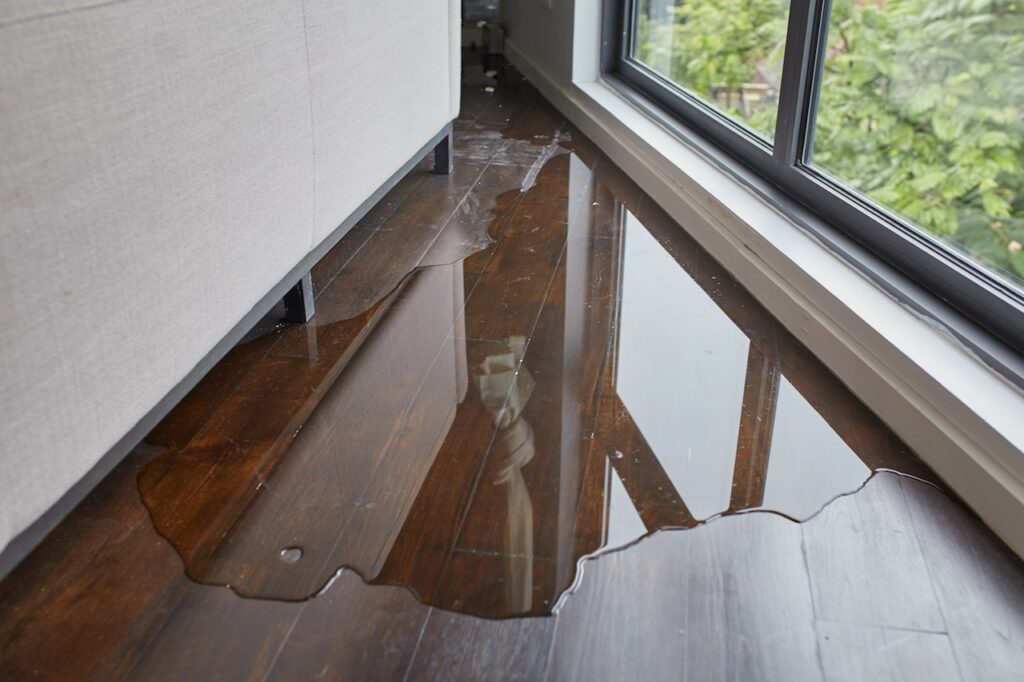
Removing any water or moisture from the hardwood floor is crucial in preventing further mould growth.
Long-Term Protection for Your Wood Floors
Once you’ve removed the mould and addressed the source of moisture, take steps to protect your hardwood floors from future mould growth.
- Seal the wood: After cleaning and drying the floors, consider applying a mould-resistant sealant to protect the wood from moisture infiltration in the future.
- Regular maintenance: Monitor indoor humidity levels, especially in areas like basements, kitchens, and bathrooms, where moisture can accumulate.
- Address water damage quickly: In the event of spills, leaks, or flooding, act swiftly to dry the affected areas and prevent mould from taking hold.
PuroClean Restoration of Nanaimo Knows How to Remove Mould from Hardwood Floors – Call Us 24/7!
Mould remediation on hardwood floors can be a complex process, but with the right approach, it’s possible to restore the beauty and integrity of your flooring. By identifying the mould type, following effective cleaning techniques, and taking steps for long-term protection, you can help keep your hardwood floors mould-free.
If the mould damage is severe, PuroClean Restoration of Nanaimo is here to help with expert mould remediation services to restore your home to a healthy state. Give our experts a call, 24/7 at (778) 906-0911.

